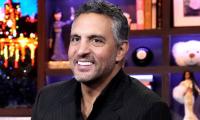As 1989 proceeded, the Soviet Communist Party faced more problems. Gorbachev was pushing it into a direction from where the party knew it would not come out unscathed. In the last week of May, the first session of the newly formed Congress of People’s Deputies was held.
It elected a new supreme soviet (assembly) of 542 members, and Gorbachev became its chairman. It wasn’t the tame legislature that the Soviet Union was used to any more. There were vigorous debates and criticism; party leadership came under strident attacks for past and present mistakes. When these appeared in the press, it looked as if the party had never done anything right. The party could not claim that it represented the interests of all people in the Soviet Union any more. In December 1989, the Congress abolished the party quota of seats in public organisations for future elections.
The Soviet Communist Party was fast losing its in-built advantages in the system, and Gorbachev was spearheading this change. Then the challenge came from the Baltic popular fronts, particularly in Lithuania. The communist party organs in the Baltic republics also demanded more decentralisation. In December 1989, the Lithuanian communist party declared itself independent of the Soviet communist party. In 1989, there were also miners’ strikes involving hundreds of thousands of miners in Siberia and Ukraine. There was increasing criticism directed at Gorbachev who was trying to keep a balance between the two extremes of reforms and reaction.
The communist ideology was evaporating into thin air as there was no clear line of leadership from the central committee (CC), though there were eight plenary meetings of the central committee in 1989. In the beginning of 1990, the Latvian party split into pro- and anti-independence wings while the Soviet party wanted to remain a unitary party but it was evidently losing its leading role. By 1990, party memberships also started declining across the country. In February 1990, there was a mass public rally of some half a million people in Moscow, calling for further democratisation.
At the rally, Boris Yeltsin attacked ‘four years of half measures and compromises’ by Gorbachev. In March 1990, the central committee itself abolished its leading role from the constitution of the party and nominated Gorbachev as president of the USSR. The Congress of People’s Deputies approved his election as the country’s executive president. On the other hand, the new legislative organs were threatening to displace the party from the decision-making arena of the country. Having realised this, Gorbachev had got himself elected president by the new Congress of People’s Deputies so that even if the party was dislodged, he would remain president of the country.
In his first speech as president, Gorbachev declared that he would be the representative of the whole nation and not of some separate layers. In early 1990, elections took place for local and republic soviets in which communists kept losing their support, and other political groups within the party such as Democratic Russia led by Popov in Moscow and Sobchak in Leningrad emerged stronger. There was also a tussle to control the party’s premises and newspapers in cities and towns. The newly elected Russian Republic assembly opened in May 1990 and the two candidates for chairmanship of the Russian Supreme Soviet: Yeltsin and Andrey Vlasov – former members of the CC – clashed.
Gorbachev supported Vlasov, who lost to Yeltsin. Now the politics within the Russian Republic communist party was fairly different from what was happening in the Soviet communist party. They were still party members, and the groups were not yet separate political parties, but existed within the party showing splits within its fold. The communist party in the Russian Republic led by Yeltsin started defying the central Soviet authority. He openly promoted Russian national interests and state sovereignty. In the Soviet communist party, Yegor Ligachyov kept criticising Gorbachev for a lack of collectivism in party leadership. There were also calls for the abolition of party units in the army, the KGB, and other state organs.
The 28th Congress of the Soviet Communist Party in July 1990 was another watershed moment as Gorbachev argued against the blind and dogmatic following of Marxism rooted in the 19th century. He wanted the party to remain the ruling party through winning majority support at the ballot box. The party was openly split into conservative and reformist groups. When Gorbachev wanted Vladimir Ivashko to occupy the new post of deputy general secretary of the party, Ligachyov contested against him but lost. Gorbachev managed to change the composition of the politburo too by including 15 Republican Party leaders into it, but that proved impractical as they could not meet frequently.
Then onwards, the politburo became an ineffective body with highly irregular meetings. At the same 28th Congress, Russian leader Yeltsin and the mayors of Leningrad and Moscow – Anatoly Sobchak and Gavriil Popov – announced their resignations from the party because now, as elected officials, they could retain their posts even without the support of the Soviet Communist Party. By 1991, there were as many as 10 different platforms within the party, following diverse lines and criticising the central leadership. In July 1991, other leading figures such as Eduard Shevardnadze and Alexander Yakovlev also quit the party. Within a year, millions of party members quit it for the party was in disarray and lacked leadership.
Under these circumstances, financial problems were compounding as regional parties and state organs tightened their purse strings and refused to pay to the central party as much as they used to. For example, in the Russian Republic, where Yeltsin had quit the party and won presidential elections in June 1991, he openly defied the authority of the central government. Increasingly helpless, Gorbachev tried to negotiate a new union treaty with the republics, operating as a loose confederation. Alarmed by this, the Soviet leadership of the party tried to remove Gorbachev in the August coup of 1991.
The coup failed and precipitated the demise of the Soviet Union. By December 25, 1991, the stage was set for the dissolution of the Soviet Union. Gorbachev had to resign and there emerged 15 new countries on the world map. In the final analysis, Gorbachev achieved what he wanted. He wanted the Soviet Union to get out of the yoke of the communist party, and he succeeded. The criticism that was targeted against the party for six years since 1985 painted it black in the eyes of the public. All good deeds of the party were wiped out.
Corruption increased manifold after the collapse of the Soviet Union. Public assets were plundered by the new elite. Democracy remained elusive as Vladimir Putin has completed his 20 years in power and plans to remain for another at least 10. The press and the opposition are still muzzled even if there is no communism. The restoration of capitalism is not blamed for all these new ills. Previously, every wrong decision was pinned on the socialist system; now nobody in the West talks about the ills of capitalism in Russia, although they do discuss the failures of Putin.
It has been 30 years since the Soviet Union imploded, and it still resonates in my mind. I remember its merits and demerits, but do not want it to come back as I believe that time should march on.
Concluded
The writer holds a PhD from the University of Birmingham, UK and works in Islamabad.
Email: mnazir1964@yahoo.co.uk
To take part in revolution, farmers need resources to afford seed varieties, fertilisers, and cost of setting up tube...
Pakistan remains burdened by insufficient financial support, saddled with conditions that deepen dependency
Government implements key policy decisions aimed at stabilising the economy
This is not going to be feel-good, year-end piece where I will use motivational quotes to tell how resilient we are
State Bank overlook considerable challenges surrounding Pakistan's economy
Pakistan remains mired in what can only be described as a ‘Baby Boomer Syndrome’







